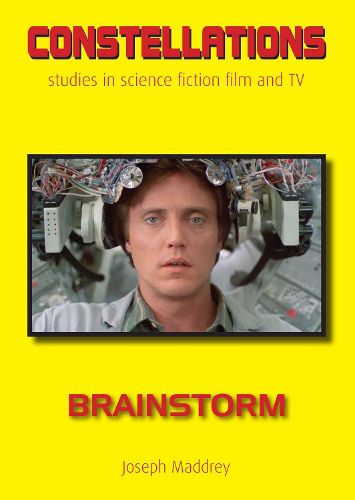Readings Newsletter
Become a Readings Member to make your shopping experience even easier.
Sign in or sign up for free!
You’re not far away from qualifying for FREE standard shipping within Australia
You’ve qualified for FREE standard shipping within Australia
The cart is loading…






The makers of Brainstorm (1983) spent more than a decade transferring the revolutionary concept of an empathy machine from page to screen, only for the famously troubled production to be met with critical and commercial indifference on release. But since 1984 the film has continued to inspire viewers to imagine possibilities for the future. As a result, Brainstorm now seems less like a fixed piece of film history than an idea in evolution. The screen story embodies the ambitions of sci-fi cinema going back to the 1950s, as well as the turbulent culture of the western world in the 1960s and 1970s. It also foreshadows technological breakthroughs around the turn of the twenty-first century, making the film startlingly relevant to our digitally-enhanced information age. To fully appreciate the film’s ultimate experience, it helps to understand exactly how the film evolved. This book aims to provide context for such an understanding, beginning with a brief history of science fiction cinema and setting up a careful consideration of multiple drafts of the Brainstorm screenplay by three different screenwriters: Bruce Joel Rubin, Philip F. Messina, and Robert Stitzel. It will also briefly examine the production history of the film (including the tragic death of star Natalie Wood), the career of the director and special effects wizard Douglas Trumbull, the particulars of the completed film, and the film’s influence on future storytellers like James Cameron.
$9.00 standard shipping within Australia
FREE standard shipping within Australia for orders over $100.00
Express & International shipping calculated at checkout
The makers of Brainstorm (1983) spent more than a decade transferring the revolutionary concept of an empathy machine from page to screen, only for the famously troubled production to be met with critical and commercial indifference on release. But since 1984 the film has continued to inspire viewers to imagine possibilities for the future. As a result, Brainstorm now seems less like a fixed piece of film history than an idea in evolution. The screen story embodies the ambitions of sci-fi cinema going back to the 1950s, as well as the turbulent culture of the western world in the 1960s and 1970s. It also foreshadows technological breakthroughs around the turn of the twenty-first century, making the film startlingly relevant to our digitally-enhanced information age. To fully appreciate the film’s ultimate experience, it helps to understand exactly how the film evolved. This book aims to provide context for such an understanding, beginning with a brief history of science fiction cinema and setting up a careful consideration of multiple drafts of the Brainstorm screenplay by three different screenwriters: Bruce Joel Rubin, Philip F. Messina, and Robert Stitzel. It will also briefly examine the production history of the film (including the tragic death of star Natalie Wood), the career of the director and special effects wizard Douglas Trumbull, the particulars of the completed film, and the film’s influence on future storytellers like James Cameron.